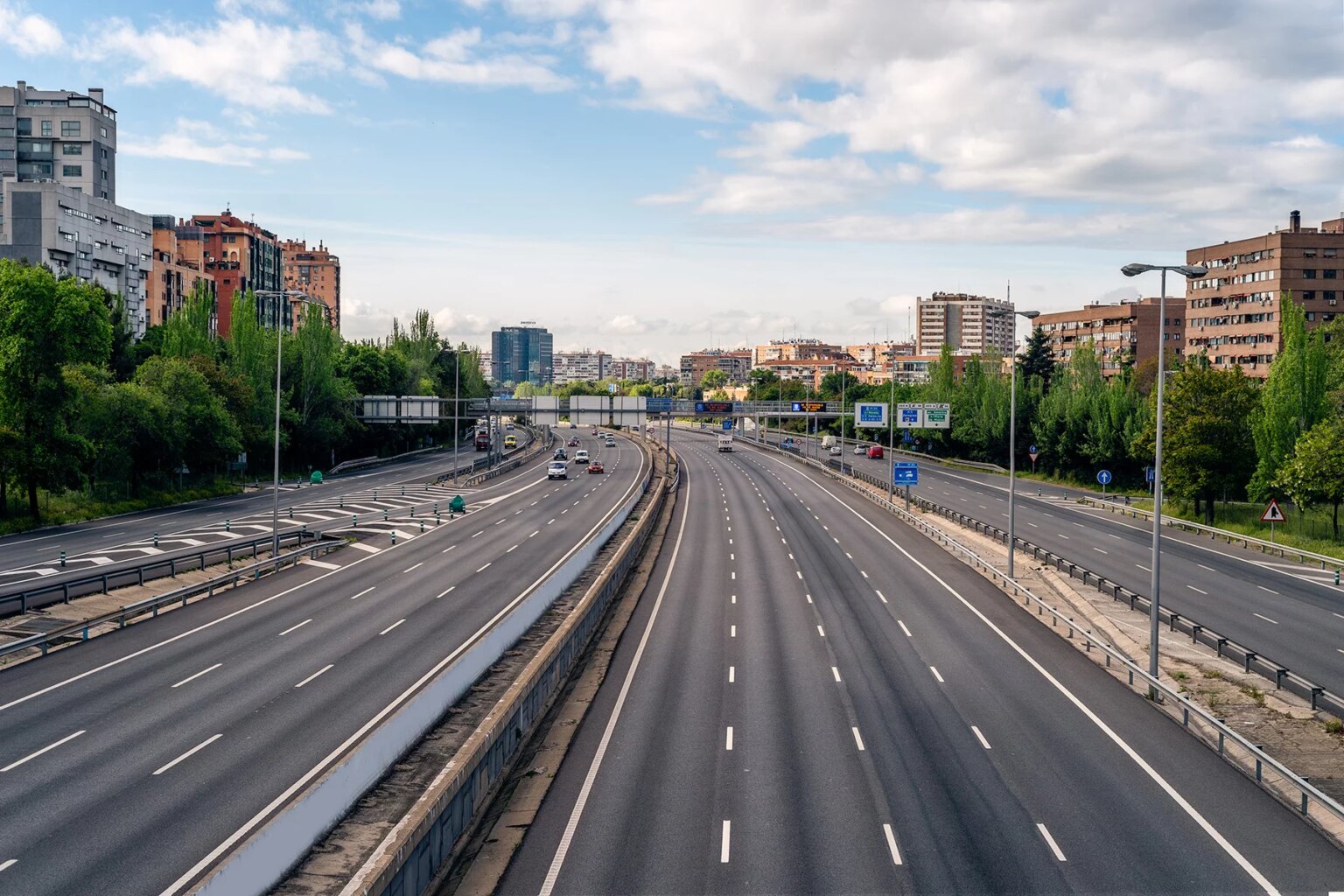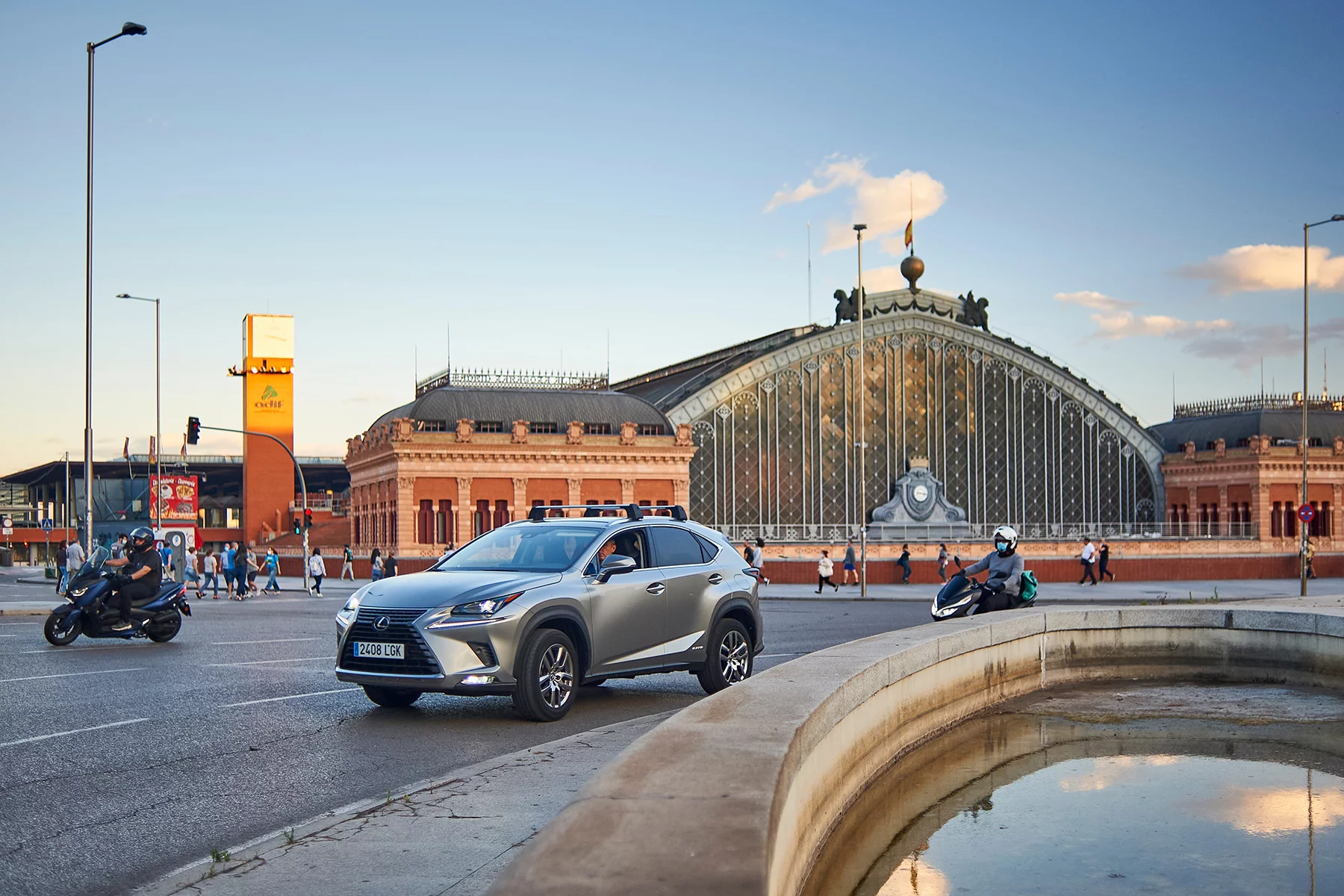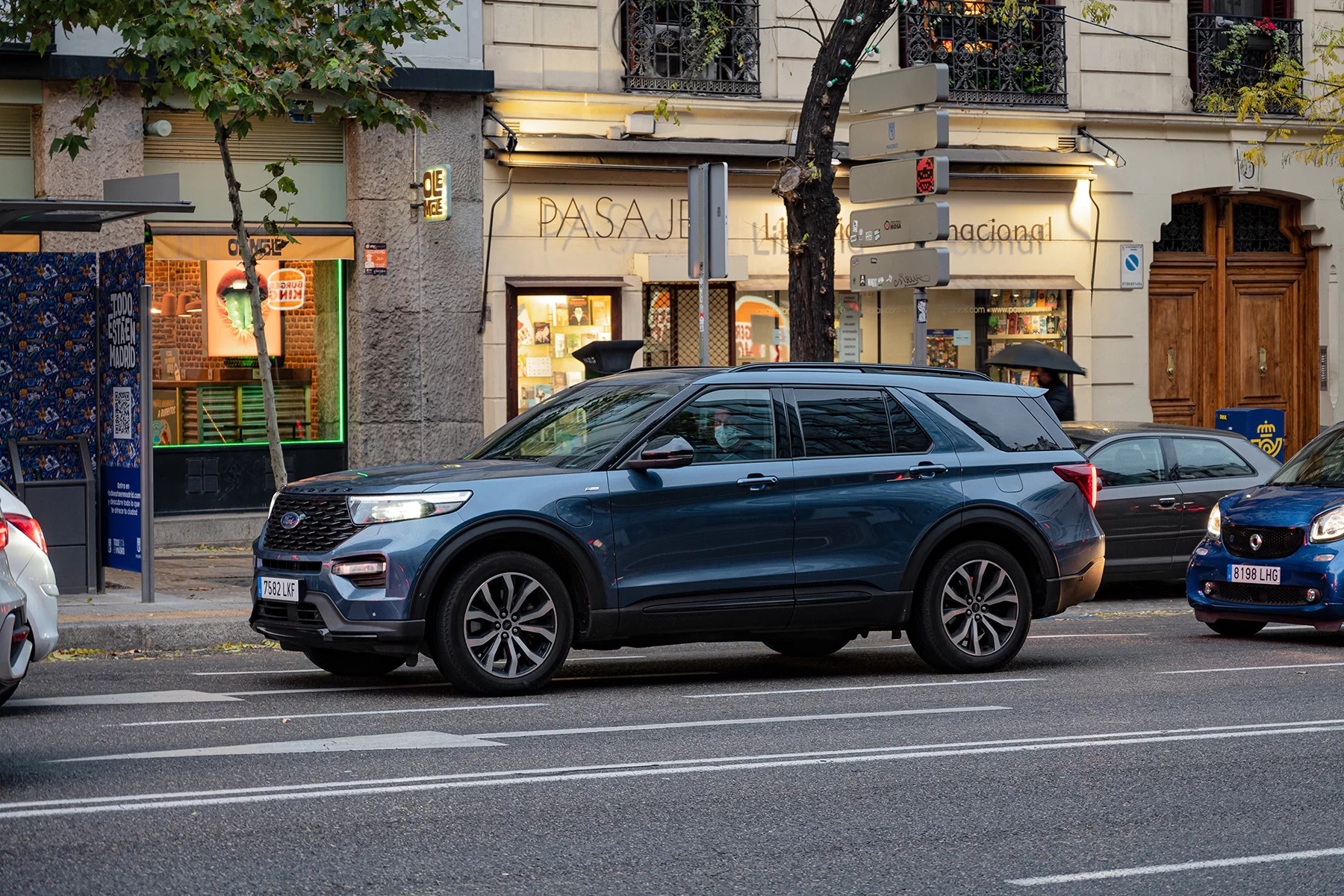Spain is a beautiful country with many scenic locations and rainy plains that are great to explore by car. However, the rules of the road may be different from what you’re used to in your own country.
If you move to Spain and plan to drive, you’ll need a valid license and the right paperwork for your vehicle. Discover everything you need to know about:
- Driving in Spain
- Who can drive in Spain?
- Spanish driving licenses
- Drivers with disabilities in Spain
- Car registration and maintenance
- Driving costs in Spain
- Driving rules and penalties in Spain
- Road signs in Spain
- Traffic information in Spain
- Parking in Spain
- Road accidents and breakdowns
- Cars in Spain
- Car repair in Spain
- Useful resources
Driving in Spain
Driving in Spain is not too different from driving in many other European countries in terms of rules and regulations. For example, you drive on the right side of the road and overtake on the left. EU/EFTA citizens in particular will be familiar with many of the road safety laws and vehicle equipment requirements. The driving culture is quite relaxed. Spain has one of the lowest fatal road accident rates in the EU.

There are just over 500 cars per 1,000 inhabitants in Spain, slightly below the overall EU average. 1.38 million new cars were bought in 2019, with just over 3% of them powered by electric or green fuel. In terms of vehicle emissions, Spain slightly lags behind the continent’s front runners. It produced 112.4g of CO2/km in 2020, above the EU average of 108.2g. There are currently low emission zones (LEZ) in Spain and Barcelona, with other environmental regulations on cars in Sevilla, Valencia and Valladolid. However, Spanish congress recently approved a bill requiring municipalities with over 50,000 inhabitants to implement a LEZ by 2023.
The Directorate-General for Traffic (Dirección General de Tráfico – DGT) is responsible for Spain’s road transport network.
Who can drive in Spain?
You can drive a car in Spain if you’re aged 18 or above and have a valid driving license. Citizens from EU/EFTA countries can use a driving license from their own country, although they will need to register with their local authority and replace it with a Spanish license when it expires. Nationals from outside the EU/EFTA can use their existing foreign driving license for six months in Spain, after which they will need to exchange for a Spanish license. Alternatively, they can get an international driving permit (IDP) which is valid for up to a year.
If you use a license issued in a foreign language, you’ll need to get it translated into Spanish or have an accompanying IDP.
Spanish driving licenses
The DGT issues driving licenses in Spain. Licenses now come in credit card format, containing the holder’s photograph and signature along with information such as name, date of birth, issue and expiry dates, and unique license number. They are usually valid for ten years.
Getting a driving license in Spain
To get a Spanish driving license, you need to be a Spanish resident and pass a two-part driving test (written theory and practical). This is unless you are exchanging a foreign license, in which case you’ll need to meet requirements based on your country of origin (see below).
Spain operates a points-based license system. Drivers generally start with 12 points, which are deducted if the holder commits driving offenses. If you reach zero points, you will usually lose your license.
Exchanging a foreign driving license in Spain
For citizens of many countries, exchanging a driving license in Spain is fairly straightforward. EU/EFTA nationals only need to renew their license when it expires, which essentially means exchanging it for a Spanish license unless they want to renew it back in their home country. You’ll need to exchange your EU driving license for a Spanish one after two years if it has no expiry date. Residents of some EU countries also need to exchange after two years if their license is valid for over five years.
Non-EU nationals usually need to exchange their license after six months (or one year if driving on an IDP). Around 25 countries, including Brazil, Japan, and Türkiye, have license exchange agreements with Spain which enable a simple exchange. Other nationals, such as those from Australia or the US, need to take the Spanish driving test to get a full license.
To exchange a foreign license in Spain, you need to make an appointment at a police station or traffic office (in Spanish). You’ll need to complete an exchange form and bring along:
- Valid ID
- Proof of Spanish residence
- Your existing driving license
Drivers with disabilities in Spain
Drivers in Spain with disabilities or mobility issues can apply for an EU parking card which gives the holder special parking rights such as designated parking spaces and free/discounted parking. You can apply for the card through your local municipality in Spain.
For specialized vehicles, you can contact World of Mobility, Euromobility (in Spanish), or Rehatrans (in Spanish) for wheelchair-accessible vehicles (WAV) or adaptations to standard vehicles such as hoists, adapted seating, and moderated hand controls.
You can find information on disability services in Spain from:
- APSA (in Spanish)
- Spanish Committee of Representatives of Persons with Disabilities (Comité Español de Representantes de Personas con Discapacidad – CERMI) (in Spanish)
Car registration and maintenance
All vehicles in Spain need to be registered with the DGT. If you buy a new car from a dealership, they will usually register it for you. You can also do it yourself online.
If you want to import a car to Spain, you will have to re-register it. You will need to show proof of ownership plus a certificate showing the car meets minimum road standards, for example EU Certificate of Conformity. The car will need to undergo a check at a licensed vehicle inspection (Inspección Técnica de Vehículos – ITV) station.
Vehicles from the EU/EFTA will just need to show proof of VAT payment on the vehicle. Cars from outside the EU are usually subject to additional import taxes. Once you’ve registered the vehicle, you will get a registration number and will be able to get Spanish license plates. You will receive temporary green license plates if you want to use an imported car in Spain before the registration process has been completed.

Cars in Spain have to undergo mandatory ITV maintenance tests once they are four years old, and then every two years until they are ten years old. After this, inspections are annual.
Driving costs in Spain
Using and maintaining a car in Spain isn’t cheap. According to the 2022 Car Cost Index, Spain has an average annual cost of €1044. Beyond the initial costs of driving license, lessons and tests plus any initial costs associated with purchase or importation, you’ll need to budget for:
- Car insurance – which cost an average of €356 annually in Spain in 2019
- Taxes – beyond the one-off registration tax which is based on CO2 emissions and can be anything up to 15% of purchase cost, you’ll have to pay annual road tax (Impuesto Sobre Vehículos de Tracción Mecánica – IVTM), which is largely based on your vehicle fuel type and your municipality.
- Fuel costs – for oil-powered cars, this is currently €1.56 per liter for petrol and €1.45 for diesel.
- Maintenance – if your car is four years old or more, it will have to pass an ITV, which usually costs around €35-40 every two years (or every year for cars older than 10 years).
- Road tolls – vehicles have to pay tolls on Spanish motorways, which can be up to around €20-30.
In addition to this are general maintenance and repair costs, parking costs, automobile club memberships and any fees associated with LEZ.
Driving rules and penalties in Spain
General road rules in Spain
Spain’s Traffic and Road Safety Code (Código de Tráfico y Seguridad Vial) details information on the country’s road rules, regulations and norms (in Spanish). Some of the main general rules are:
- Vehicles overtake on the left. Any vehicle longer than 10m or over 3.5 tons should keep at a distance of at least 50m from the vehicle in front on main roads.
- All passengers need to wear seatbelts. Children need to be 12 years old or above to sit in the front passenger seat. All children below 1.35m tall need to be secured in a child safety seat.
- Drivers approaching from the right have priority, although vehicles from either direction have priority at roundabouts.
- Snow chains are required if traveling to mountainous areas in winter.
- It is illegal to use a car horn unless in an emergency, you need it to avoid an accident, or to alert to a serious incident (e.g. a crime).
- Fines for minor offenses can be up to €100. If you don’t have a residency permit or a Spanish NIE number, you usually have to pay the fine on the spot.

In addition to your driving license, car insurance certificate, and ITV certificate (if necessary), you should keep the following in your car at all times when driving:
- Two warning triangles to use in the event of a breakdown or accident
- Reflective jacket
- Headlamp beam deflectors
- Spare bulbs for headlights
- Spare tire and puncture repair kit, unless the vehicle is registered outside Spain
- Extra pair of prescription driving glasses if required
Speed limit in Spain
Spain introduced new speed limits in 2021. Failing to comply can result in on-the-spot fines or worse. Current limits are:
- 30km/h in residential or built-up areas (or 20km/h on streets shared by cars and pedestrians)
- 50km/h on urban roads with two lanes in each direction
- 90km/h on out-of-town roads
- 120km/h on motorways
Penalties for speeding in Spain depend on the seriousness of the offense. Fines are between €100-600 and, if you are speeding by at least 20km/h above the limit, you will get a points deduction of between 2-6 points.
In the past few years Spain has increased the number of speed radars all over the country. Both fixed radars (permanently placed) and mobile radars (used by police or Guardia Civil) are used.
Driving under the influence in Spain
The alcohol limit for drivers in Spain is 0.5g per liter of blood for regular drivers, which is lower than the UK limit which is 0.8g/L. The below table shows limits for different categories of Spanish driver:
| Drivers | In airstream | In bloodstream |
| General | 0.25mg/L | 0.5g/L |
| Beginner | 0.15mg/L | 0.3g/L |
| Professional (freight trucks and passenger vehicles) | 0.15mg/L | 0.3g/L |
Driving under the influence of any drugs is illegal. Penalties for driving under the influence of alcohol or drugs are fines of between €500-1,000 and between 4-6 points on the license.
Distracted driving laws in Spain
You are not allowed to drive in Spain while using a mobile phone or hand-held electronic device, unless it is connected to a hands-free device. Around a quarter of traffic accidents in Spain are due to distracted driving. If you are caught using a hand-held mobile phone or device while driving in Spain, you could face a fine of up to €200 and lose up to 6 points on your license.
Driving without a license in Spain
Driving a vehicle without a valid license is considered a very serious violation in Spain. If you are unable to produce a license when stopped by the Spanish authorities, you could be fined around €500. Furthermore, you could face a driving ban of up to two years, or even a jail sentence of up to six months.
Road signs in Spain
Road signs in Spain follow a similar pattern to those in many other European countries. The main categories are:
- Warning signs – these alert drivers to potential dangers ahead and are typically triangular with a red border and a black image on a white background.
- Information signs – convey general information, for example parking zone or pedestrian crossing. Usually rectangular or square and either white on blue background or black on white background.
- Prohibition signs – telling drivers what is not allowed and typically circular with a red border and black image/text on a white background.
- Mandatory signs – signs giving instructions that drivers must follow, for example mandatory left turn or snow chains needed. Usually a blue circle with white image/text.
- Priority signs – explain who has priority in different situations. They come in a variety of shapes and colors.
Traffic information in Spain
Section that includes information such as:
Spain doesn’t experience the level of traffic problems one might expect for a country of its stature. It ranks only 67th out of 87 assessed countries on the 2022 Global Traffic Index. Furthermore, only Barcelona (93rd) features among the world’s 100 most congested cities.

You can get up-to-date traffic information in Spain on the DGT website (in Spanish) or the UK Michelin website.
Parking in Spain
Parking in town or city centers is controlled by ticket machines in many places. These are often in blue zones where you see blue ticket machines and street markings.
Buy a ticket from a machine and place it clearly on the dashboard, showing the hours of validity. Parking is sometimes free in siesta hours, between 2pm and 4pm Monday to Friday, and after 2pm on Saturdays. It is usually free on Sundays. Tickets usually cost around €1.
In addition, depending on the city, there are other coloured zones for those who pay annual fees. These are resident zones. You cannot park in those zones at all (unless you are a registered resident) or you will receive a fine.
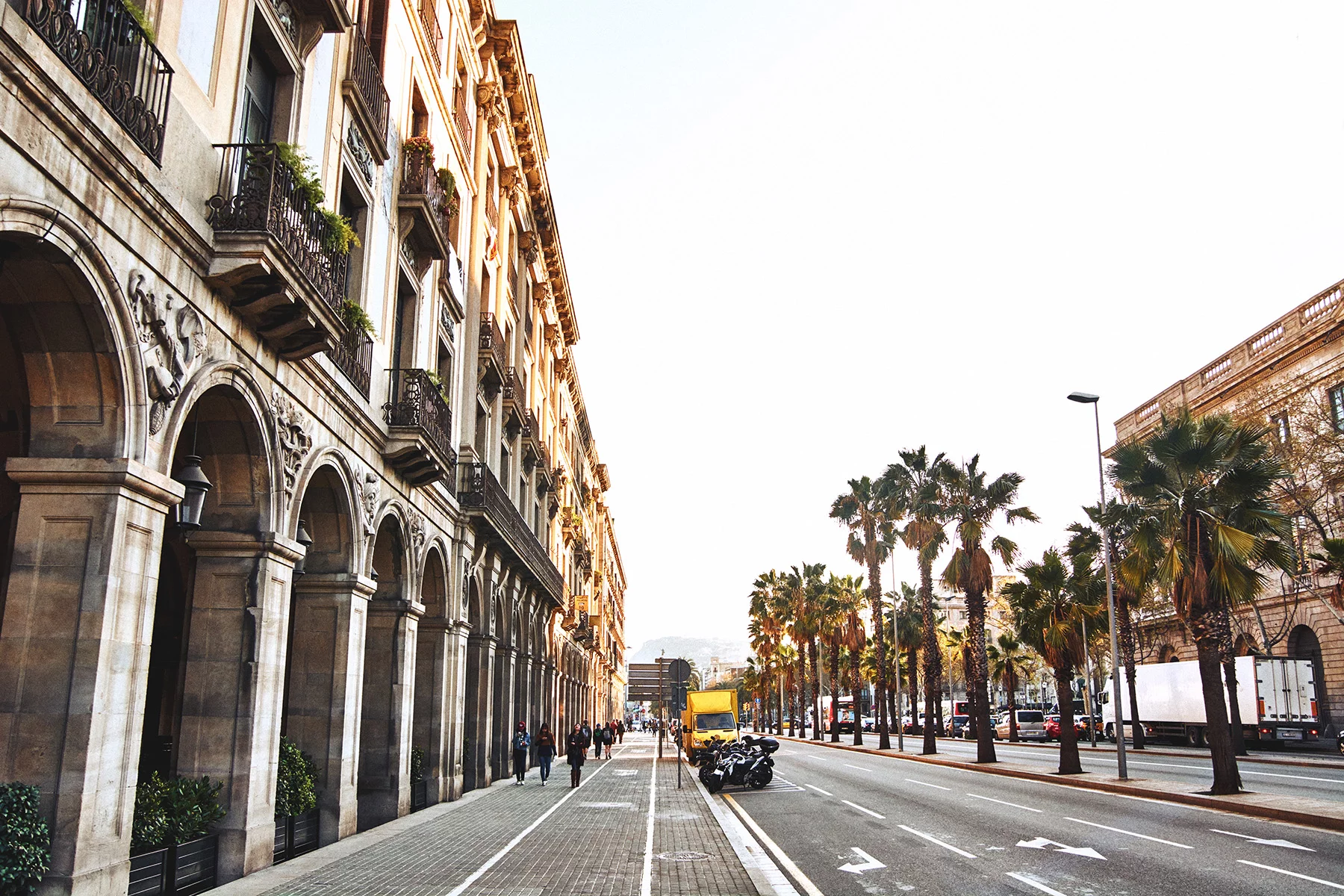
Parking fines in Spain are usually around €40. If you get a parking fine while in the blue zone, you may be able to cancel the ticket by inserting around €3 into the ticket machine to get a replacement ticket. However, this is usually only for recently issued tickets.
Many towns and cities also offer off-road car parks where you receive a ticket on entry and then pay before you leave, based on the amount of time that has elapsed.
Never park at a yellow curb, in front of dropped curbs, gates, or garages, or where you see no parking signs or no through road signs. Also, be warned that illegally parked vehicles can be towed away.
Reserved parking in Spain
Similar to many other countries, Spain has designated parking spaces for drivers with disabilities. You can usually identify these by a white wheelchair symbol on a blue background. Reserved parking on streets and in municipal car parks is either free or discounted.
If you are a driver with a disability, you can apply for an EU disability parking card that is valid in all EU/EFTA countries.
Road accidents and breakdowns
Road accidents in Spain
Spain has the sixth lowest rate of fatal road accidents in the EU according to 2019 statistics, with 37.4 deaths per million people. If you are unlucky enough to be involved in a traffic accident (accidente de trafico) in Spain, you should:
- Stop your car immediately
- Put on your reflective jacket and place your warning triangles at the front and rear of the vehicle
- Call the Spanish emergency services if the accident is serious
- Ensure that any passengers exiting the vehicle also wear a reflective vest
- Take down the name, address, NIE number and car details (license plate number, car insurance information) of any other drivers involved
- Get statements from any witnesses if necessary
- Take pictures or videos of any vehicle damage
- Complete your EU accident report form, which you should receive from your insurer
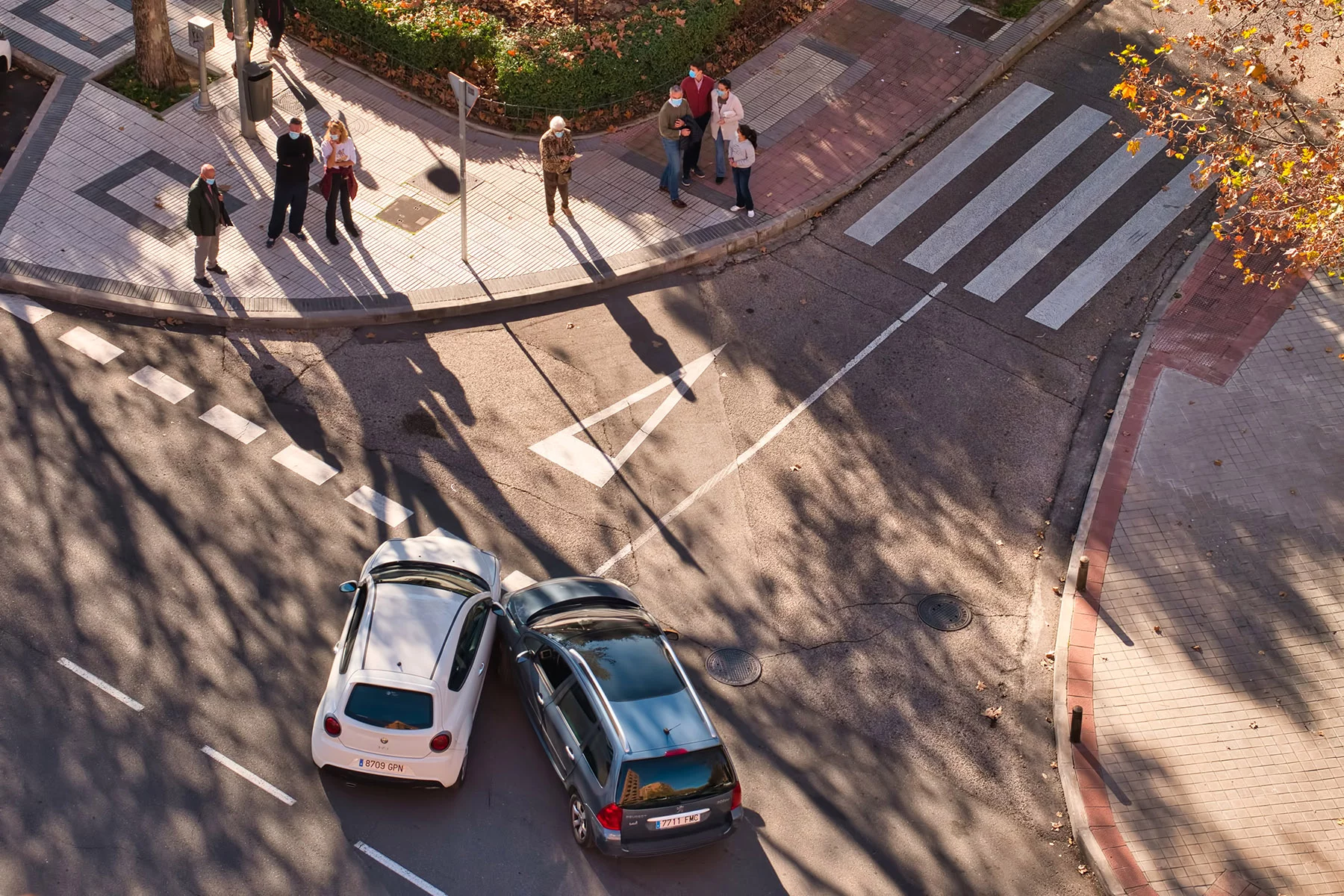
You should file a claim with your car insurance company as soon as possible unless it is agreed that the driver of another vehicle is at fault, in which case their third party insurance should cover you. In the event of a serious accident, the police will issue a report which can also be used for insurance claims.
Failure to stop at the scene of an accident you are involved in is considered a serious traffic violation and can result in a large fine or even a jail sentence.
Vehicle breakdowns in Spain
If your car breaks down on a Spanish road, pull over to the side of the road or the nearest safe place and contact your roadside assistance provider. Many Spanish car insurance companies sell breakdown assistance coverage either as part of a fully comprehensive policy or as an add-on. Alternatively, you can take out membership with an organization such as the Royal Automobile Club of Spain (Real Automóvil Club de España – RACE).
If you don’t have any breakdown coverage, you can contact RACE for assistance but you will have to pay a fee for their services.
Cars in Spain
You can buy new and used cars in Spain, or even import cars from abroad, as long as you’re a Spanish resident and follow the correct procedures.
Importing a car in Spain
You can import most cars into Spain, however the procedures and costs largely depend on where you are coming from.

Importing a car from the EU/EFTA region is fairly straightforward. You just need to re-register the vehicle in Spain and you won’t need to pay any taxes unless you haven’t paid VAT on a newly-bought car.
Importing from outside the EU is a bit more complicated. You must bring the car through Spanish customs and will usually have to pay import tax. The car will also need to comply with current EU vehicle standards and pass an ITV review.
Buying a car in Spain
You can buy cars in Spain from a dealership (concesionario) or online. If you’re looking for a used model, you can also search for private sellers or car auctions. Dealerships usually sell both new and secondhand cars and they’ll typically deal with all the registration paperwork.
You don’t need a driving license to buy a car in Spain but you do need proof of Spanish residence, for example a residence permit or NIE number. You will also need to buy car insurance. If you purchase a used vehicle, make sure it has an ITV certificate if required.
Most Spanish dealerships and online platforms now also sell a range of electric cars and hybrids, which are more eco-friendly and have tax benefits.
Hiring a car in Spain
If you’re in Spain for a short period or only plan to use a car occasionally, then renting one might be a better option. The requirements for hiring a car in Spain are slightly higher than for buying. For instance, you usually need to be at least 21 years old and have had your driving license for at least a year. Many firms also charge young drivers (aged 21-24) an additional fee.
When hiring a car, you may also need to purchase excess car insurance if your standard policy doesn’t include coverage for driving rented vehicles.
Car hire costs in Spain typically range from as low as €5/day for budget models up to around €40 a day for luxury brands. Popular hire companies include:
You can compare deals on sites such as Auto Europe (in Spanish).
Selling a car in Spain
If you decide you’d like to sell a car, the process is similar to the one you’d go through for buying a used car. You must disclose the condition of the car and any previous accidents and repairs. As the seller, you must draw up a contract with the person who is buying your car and you are liable for transferring ownership at the Provincial Traffic Authority.
If you decide to use a dealer to help sell your car, they will take a fee that varies depending on who you use.
Carpooling/car sharing in Spain
Carpooling is a system of ride-sharing where people going on the same journey share one car rather than drive separately. It’s a great way of economizing on costs as well as helping the environment. Carpooling has started to take off in many countries, especially in bigger cities. There are now several websites and apps where you can search for or advertise carpooling in your area.
Popular carpooling platforms in Spain include:
- AmiCoche (in Spanish)
- Amovens (Spanish but with English language option)
- BlaBlaCar (in Spanish)
- CarpoolWorld
Car repair in Spain
You can find auto repair garages, shops and spare parts providers all over Spain. If you buy a new car from a dealership, they will usually put you in touch with contracted garages although these might not always be the most cost-effective solution.

You can usually just turn up at most garages, although you can book an appointment to avoid problems or if you have a complex problem with your car. Most garages open around 08:00–09:00 and close around 18:00–19:00, many shutting for a couple of hours in the afternoon (14:00–16:00). Search for services in your area on sites such as Europages or the Spanish Yellow Pages (Paginas Amarillas).
Useful resources
- Spanish government online portal – section on vehicles, mainly in relation to EU/EFTA residents living in Spain.
- Directorate-General for Traffic (Dirección General de Tráfico – DGT) – government department responsible for roads and traffic in Spain
